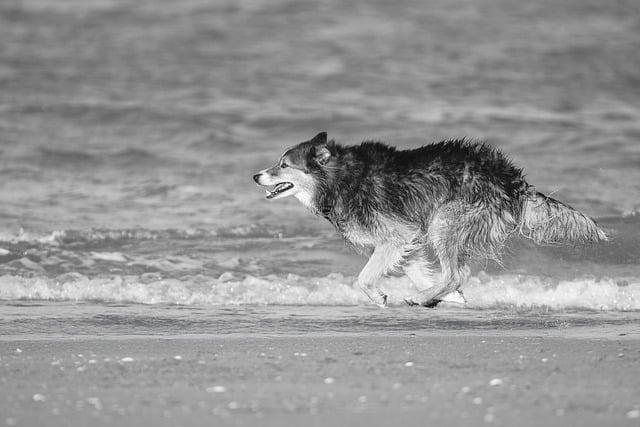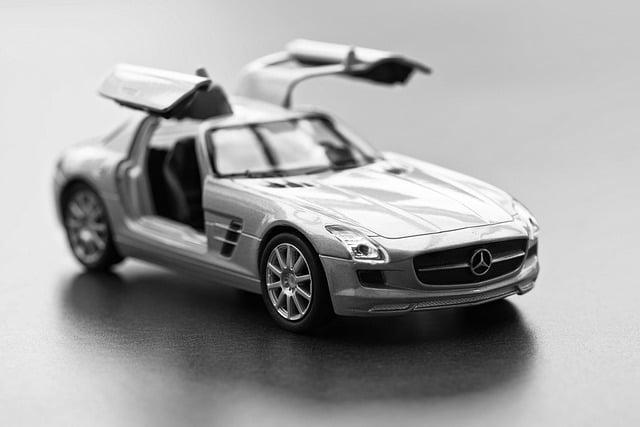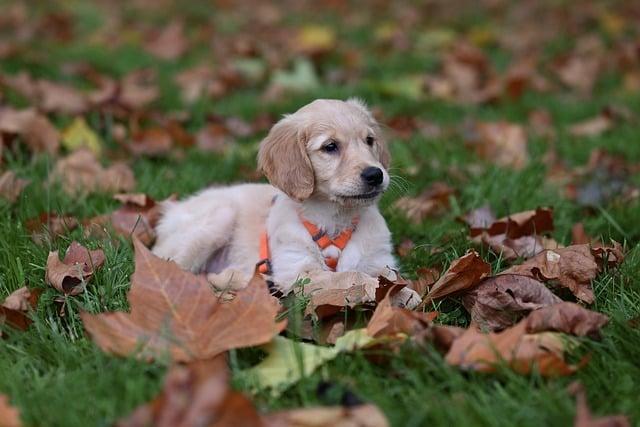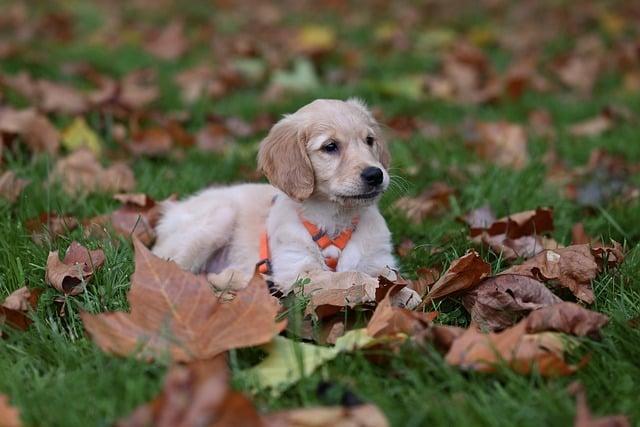Max, a lively golden retriever, once adored his squeaky toy. Day after day, he’d pounce and play, but as the months passed, the excitement faded. One afternoon, his owner noticed Max staring longingly at a neighbor’s dog playing with a fresh, colorful ball. Inspired, she introduced a new toy to Max’s collection. Instantly, his tail wagged with joy, and he rediscovered his playful spirit. This simple change proved that dogs, like us, crave novelty. To keep your furry friend engaged and happy, rotate their toys regularly!
Contents
- Understanding Canine Boredom and Its Impact on Playtime
- Recognizing Signs That Your Dog Is Tired of Their Toys
- Innovative Strategies to Revitalize Your Dogs Toy Collection
- Choosing the Right Toys to Keep Your Dog Engaged and Stimulated
- Q&A
Understanding Canine Boredom and Its Impact on Playtime
Canine boredom is a significant concern for dog owners, as it can lead to a variety of behavioral issues and a decline in overall well-being. Dogs, like humans, thrive on mental and physical stimulation. When they are not adequately engaged, they may resort to destructive behaviors, excessive barking, or even anxiety. Understanding the signs of boredom is crucial for pet parents who want to ensure their furry friends remain happy and healthy.
One of the primary indicators of boredom in dogs is a lack of interest in their toys. If your dog used to play enthusiastically with a particular toy but now ignores it, it may be time to reassess their playtime options. Dogs can quickly become desensitized to familiar toys, leading to a diminished play experience. To combat this, consider rotating their toys regularly or introducing new ones that stimulate their curiosity and encourage active play.
Engaging your dog in interactive play can also help alleviate boredom. Activities such as fetch, tug-of-war, or puzzle toys can provide both mental and physical challenges that keep your dog entertained. **Incorporating variety** into playtime not only enhances your dog’s enjoyment but also strengthens the bond between you and your pet. Remember, the goal is to create an enriching environment that caters to your dog’s natural instincts and energy levels.
Moreover, it’s essential to recognize that boredom can have long-term effects on a dog’s behavior and health. A bored dog may develop habits that are difficult to break, leading to a cycle of frustration for both the pet and the owner. By prioritizing playtime and ensuring that your dog has access to a diverse range of toys and activities, you can foster a happier, more fulfilled canine companion. **Investing time in understanding your dog’s needs** will ultimately lead to a more harmonious relationship and a healthier lifestyle for your furry friend.
Recognizing Signs That Your Dog Is Tired of Their Toys
As a devoted pet owner, it’s essential to stay attuned to your dog’s behavior, especially when it comes to their playtime activities. If you notice your furry friend showing signs of disinterest in their toys, it may be time to reassess their playthings. Dogs, like humans, can experience boredom, and recognizing the signs early can help keep their spirits high and their minds engaged.
One of the most telling indicators that your dog is tired of their toys is a noticeable decline in playtime enthusiasm. If your pup used to eagerly fetch their favorite ball or tug on a rope, but now seems indifferent, it’s a clear signal that their interest has waned. Additionally, if you observe them ignoring toys altogether or opting for household items instead, this behavior can further confirm their boredom.
Another sign to watch for is a change in your dog’s interaction with their toys. If they start to chew less vigorously or show reluctance to engage in play, it may indicate that the novelty has worn off. Dogs thrive on stimulation, and when their toys no longer provide that excitement, they may seek alternative forms of entertainment, which can lead to destructive behaviors if left unaddressed.
Lastly, consider the frequency with which your dog plays with their toys. If you find that certain toys are gathering dust or being left untouched for days on end, it might be time to refresh their toy collection. Introducing new textures, colors, and types of toys can reignite your dog’s interest and encourage them to engage in healthy play, ultimately enhancing their overall well-being.
Innovative Strategies to Revitalize Your Dogs Toy Collection
Keeping your dog’s toy collection fresh and exciting is essential for their mental stimulation and overall happiness. One effective approach is to rotate their toys regularly. By introducing a few toys at a time and putting others away for a while, you can create a sense of novelty. When you bring back the “old” toys, your dog will likely be thrilled to rediscover them, as if they are brand new. This simple strategy can reignite their interest and encourage more playtime.
Another innovative strategy is to engage in DIY toy-making. Use household items to create unique toys that cater to your dog’s preferences. For example, you can repurpose old t-shirts into braided tug toys or fill a sock with a tennis ball for a fun fetch alternative. Not only does this save money, but it also allows you to customize toys that suit your dog’s play style. **Get creative** and involve your family in the process for added fun!
Consider incorporating interactive toys that challenge your dog’s problem-solving skills. Puzzle toys that dispense treats or require manipulation to reveal hidden goodies can keep your dog engaged for longer periods. These toys not only entertain but also stimulate your dog’s mind, helping to alleviate boredom. Look for options that can be adjusted in difficulty, allowing you to increase the challenge as your dog becomes more adept at solving them.
Lastly, don’t underestimate the power of scent and sound in toys. Dogs are naturally drawn to toys that engage their senses. Look for toys that squeak, crinkle, or have pockets for treats infused with enticing scents. **Experiment with different textures and sounds** to see what captures your dog’s attention the most. By diversifying the sensory experiences in their toy collection, you can keep their playtime exciting and fulfilling.
Choosing the Right Toys to Keep Your Dog Engaged and Stimulated
When it comes to keeping your furry friend entertained, the right toys can make all the difference. Dogs, much like humans, thrive on variety and stimulation. If your pup has been playing with the same toys for a while, they may start to lose interest. To combat boredom, consider introducing a mix of toys that cater to different instincts and play styles. This not only keeps your dog engaged but also promotes mental and physical well-being.
**Interactive toys** are a fantastic option for dogs that enjoy problem-solving. These toys often require your dog to think critically to access treats or rewards hidden inside. Look for options that challenge your dog’s intellect, such as puzzle feeders or toys that dispense treats when manipulated correctly. By engaging their minds, you can help stave off boredom and encourage your dog to stay active and focused.
**Chew toys** are another essential category that can keep your dog entertained for hours. Dogs have a natural instinct to chew, and providing them with durable, safe chew toys can satisfy this urge while also promoting dental health. Look for toys made from tough materials that can withstand vigorous chewing. Additionally, consider rotating these toys regularly to maintain your dog’s interest and excitement.
Lastly, don’t underestimate the power of **fetch and tug toys**. These toys encourage physical activity and can strengthen the bond between you and your dog through interactive play. Opt for toys that are easy to throw and catch, as well as those designed for tugging. Engaging in regular play sessions not only keeps your dog entertained but also provides essential exercise, helping to prevent behavioral issues that often arise from boredom.
Q&A
-
Do dogs get bored of their toys?
Yes, dogs can get bored of their toys, especially if they play with the same ones repeatedly. Just like humans, dogs enjoy variety and stimulation. Introducing new toys can reignite their interest and keep them engaged.
-
How can I tell if my dog is bored with their toys?
Signs of boredom in dogs include ignoring their toys, showing disinterest during playtime, or seeking out other activities to entertain themselves. If your dog seems less enthusiastic about their toys, it may be time to refresh their collection.
-
What types of toys do dogs prefer?
Dogs often prefer toys that are interactive, squeaky, or have different textures. Rotating between different types of toys can keep their playtime exciting. Consider toys that challenge them mentally, such as puzzle toys or treat-dispensing options.
-
How often should I replace my dog’s toys?
It’s a good idea to rotate your dog’s toys every few weeks and replace them as needed. Regularly introducing new toys can help maintain their interest and prevent boredom. Additionally, inspect toys for wear and tear to ensure your dog’s safety.
keeping your dog’s playtime engaging is essential for their happiness and well-being. Regularly refreshing their toy collection can prevent boredom and stimulate their minds. Invest in variety—your furry friend will thank you with wagging tails and joyful barks!

大家好,我是彼得潘,專業的手法身體治療師。我喜歡探索和研究各種主題,並透過與人工智慧的合作分享專業、實用、有趣的文章。我們定期進行人工審核,以確保內容的準確性。如果您發現文章中有任何不準確的地方,請隨時與我們聯繫,我們會及時糾正。您可以透過 [email protected] 與我們聯繫。



